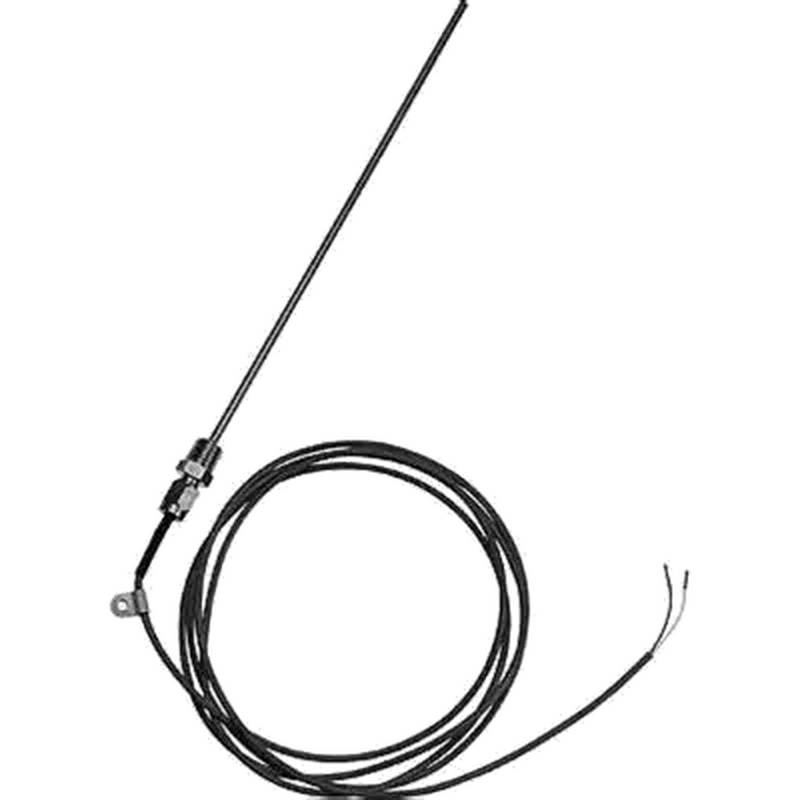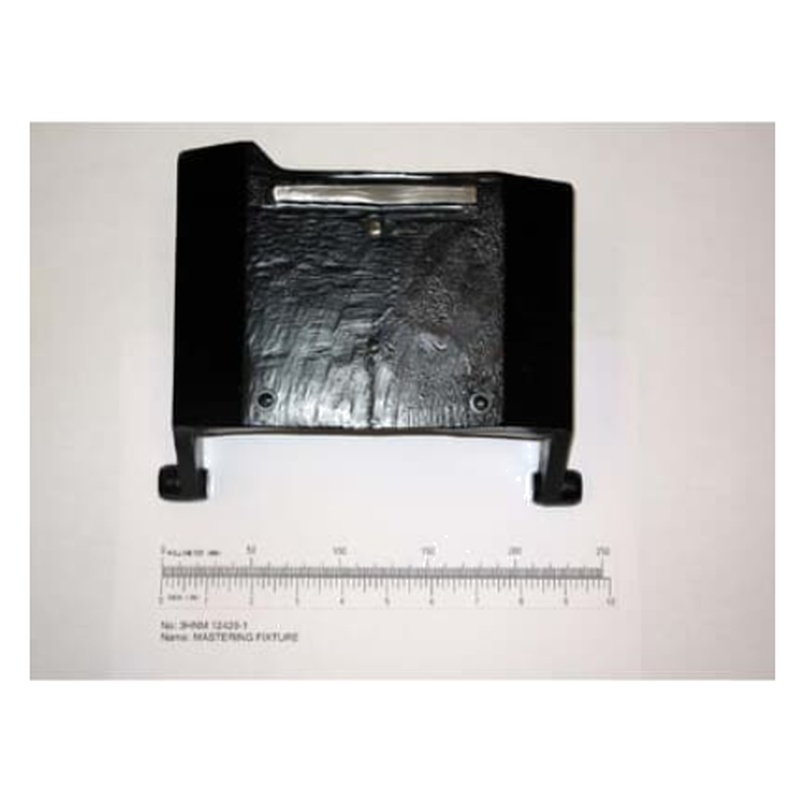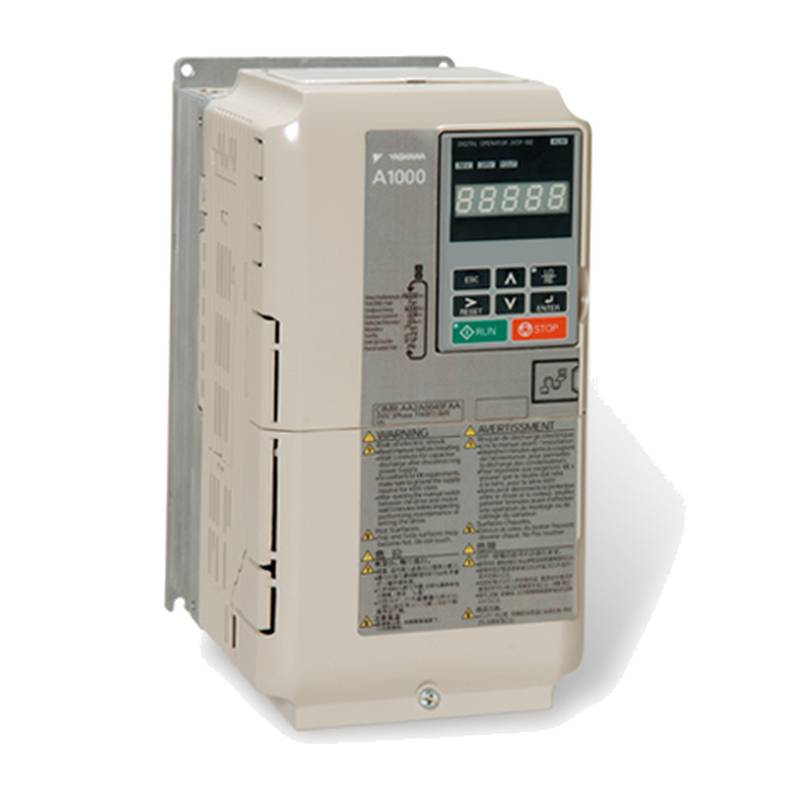
The Siemens BPZ:QAE26.93 Low Temperature Sensor stands as a critical component for precise environmental monitoring in demanding industrial applications. This NTC thermistor-based sensor is engineered for reliable, long-term performance, offering a measurement range of -50 to +150 °C with an accuracy of ±0.5 K at 25 °C. Its robust construction, featuring a stainless steel immersion sleeve, ensures durability even in harsh conditions, making it an ideal choice for HVAC systems, building automation, and various industrial process controls where accurate low-temperature detection is paramount. The BPZ:QAE26.93 boasts a standard output signal of 0-10 V, facilitating seamless integration into existing control systems.
| Parameter | Specification |
| :---------------- | :-------------------------------------------- |
| Sensor Type | NTC Thermistor |
| Measurement Range | -50 to +150 °C |
| Accuracy | ±0.5 K at 25 °C |
| Output Signal | 0-10 V |
| Immersion Sleeve | Stainless Steel |
| Protection Class | IP65 |
| Cable Length | 1.5 m (Standard, extendable) |
| Connection | 2-wire |
| Application Temp. | -50 to +150 °C |
| Storage Temp. | -50 to +70 °C |
| Humidity | 0-95% RH (non-condensing) |
| Electrical Data | Max. Load: 5 mA |
Core Features & Market Positioning
The Siemens BPZ:QAE26.93 distinguishes itself through its high accuracy and broad operating temperature range, crucial for applications requiring meticulous control. Its stainless steel immersion sleeve provides superior corrosion resistance and mechanical protection, positioning it as a premium solution for environments where sensor longevity is a primary concern. The sensor's compatibility with the 0-10 V standard output signal ensures straightforward integration with a vast array of building management systems (BMS) and industrial control platforms, offering a competitive advantage in terms of interoperability and reduced implementation complexity.
Key Application Scenarios
This low-temperature sensor is ideally suited for monitoring chilled water systems, refrigeration units, and cold storage facilities. In building automation, it plays a vital role in controlling air handling units (AHUs) and managing supply air temperatures to optimize comfort and energy efficiency. Industrial process applications benefit from its reliability in monitoring cooling circuits, chemical processes requiring precise temperature control, and any scenario where maintaining temperatures below ambient is critical for product quality or operational integrity.
Practical System Integration Guidance
Integration of the Siemens BPZ:QAE26.93 is streamlined by its standard 2-wire connection and 0-10 V output. For installation, ensure the immersion sleeve is correctly positioned within the fluid or air stream to be measured, using appropriate sealing to prevent leaks. Wiring involves connecting the sensor's output terminals to the corresponding analog input of the controller or BMS. Calibration is typically performed digitally through the connected control system, allowing for fine-tuning of the sensor's readings to match the specific application requirements.
Operation and Risk Mitigation
Operating the BPZ:QAE26.93 within its specified temperature range (-50 to +150 °C) is essential for maintaining accuracy and preventing damage. While the sensor boasts an IP65 protection class, direct immersion in aggressive chemicals not compatible with stainless steel should be avoided. Regular visual inspection of the immersion sleeve and connection points can help identify potential issues early. Faults are typically indicated by abnormal signal outputs, which can be diagnosed by comparing sensor readings with known system conditions or through the diagnostic functions of the connected control system.
Scalability & Long-Term Value
The Siemens BPZ:QAE26.93 offers significant long-term value due to its robust build quality and compatibility with Siemens' extensive range of automation solutions. Its standard output signal ensures it can be integrated into future system upgrades or expansions without requiring specialized adapters or complex rewiring. For enhanced IIoT integration, the sensor can be connected to gateways or data loggers that translate the analog output into digital formats, enabling remote monitoring, data analytics, and predictive maintenance strategies.
*
FAQs
What is the operating temperature range of the Siemens BPZ:QAE26.93?
The sensor operates reliably within a wide temperature range of -50 to +150 degrees Celsius. This broad capability ensures consistent performance across various demanding industrial and building automation environments.
This wide operational window makes the BPZ:QAE26.93 suitable for both freezing conditions and moderately elevated temperatures. Its NTC thermistor technology is specifically designed for this spectrum.
Care must be taken to ensure the fluid or air being measured stays within these specified limits for optimal sensor longevity and accuracy. Exceeding these can lead to sensor malfunction.
How is the Siemens BPZ:QAE26.93 typically wired into a control system?
This sensor utilizes a simple 2-wire connection for its output signal. The output is a standard 0-10 V analog signal representing the measured temperature.
Connect the two wires from the sensor directly to the designated analog input terminals on your controller or building management system. Consult your controller's manual for specific terminal assignments.
Ensure proper polarity during wiring and secure connections to prevent signal interference or loss. The cable length can also be extended if necessary, following manufacturer guidelines.
What kind of accuracy can I expect from the Siemens BPZ:QAE26.93?
The Siemens BPZ:QAE26.93 offers a high level of accuracy, specified as ±0.5 K at 25 degrees Celsius. This precision is crucial for sensitive temperature control applications.
This accuracy ensures that your control system receives reliable data, enabling tight regulation of processes and environmental conditions. It minimizes deviations from setpoints.
For critical applications, consider system-level calibration which accounts for the controller's input and any signal conditioning to achieve the best possible overall accuracy.
What are the primary applications for the Siemens BPZ:QAE26.93?
This sensor is ideal for monitoring and controlling low-temperature applications in HVAC and industrial processes. Key uses include chilled water loops and refrigeration systems.
It is also widely deployed in building automation for managing supply air temperatures in AHUs and ensuring optimal indoor comfort and energy efficiency. The sensor's robustness suits these environments well.
Industrial sectors benefit from its reliability in cooling circuits, chemical process temperature regulation, and any scenario requiring precise sub-ambient temperature management.
What is the output signal of the Siemens BPZ:QAE26.93 sensor?
The sensor outputs a standard 0-10 V analog signal that directly corresponds to the measured temperature. This is a widely adopted standard in industrial automation.
This signal type ensures broad compatibility with most modern controllers, PLCs, and building management systems without the need for special converters. It simplifies integration.
The 0-10 V range can be mapped within your control system software to the sensor's -50 to +150 °C measurement range for accurate temperature readings.
What material is the immersion sleeve of the Siemens BPZ:QAE26.93 made from?
The immersion sleeve is constructed from durable stainless steel, providing excellent resistance to corrosion and mechanical wear. This enhances the sensor's lifespan in harsh environments.
The stainless steel construction ensures that the sensor can be safely installed in a variety of fluids and industrial media, provided they are compatible with the material. It offers robust protection.
This material choice contributes to the sensor's overall reliability and suitability for long-term deployment in demanding applications where exposure to elements is common.
Does the Siemens BPZ:QAE26.93 have a protection class rating?
Yes, the Siemens BPZ:QAE26.93 sensor features an IP65 protection class rating. This signifies a high degree of protection against dust ingress and water jets.
This rating means the sensor is suitable for installation in environments where dust may be present or where cleaning with water jets is necessary. It offers good resilience.
Ensure that connections are properly sealed and protected to maintain the integrity of the IP65 rating at the installation point. The sensor body itself is well-protected.
Can the Siemens BPZ:QAE26.93 be used in outdoor applications?
With its IP65 rating, the BPZ:QAE26.93 offers good protection against environmental factors like dust and water. It is generally suitable for many outdoor installations.
However, consider potential extreme temperature variations and prolonged direct exposure to harsh weather conditions. Shielding may be advisable in particularly severe climates.
Always ensure that the wiring connections are also protected from the elements to maintain the overall system's reliability and safety in outdoor deployments.
What type of sensor element does the Siemens BPZ:QAE26.93 use?
The BPZ:QAE26.93 sensor utilizes an NTC (Negative Temperature Coefficient) thermistor as its sensing element. This technology is known for its sensitivity and accuracy at moderate temperatures.
NTC thermistors change their electrical resistance significantly with temperature fluctuations, allowing for precise measurement within their specified range. They are a cost-effective solution.
The specific characteristics of the NTC element are calibrated to provide the 0-10 V output signal across the sensor's operational temperature span.
How does the Siemens BPZ:QAE26.93 integrate with IIoT platforms?
Integration with IIoT platforms is achieved by connecting the sensor's 0-10 V output to a data acquisition device or gateway. This device translates the analog signal into a digital format suitable for IIoT systems.
The digital data can then be transmitted wirelessly or via wired networks to cloud platforms for analysis, monitoring, and integration into broader smart building or industrial IoT solutions.
This enables remote access to temperature data, historical trend analysis, predictive maintenance, and optimized operational efficiency through advanced data analytics.

























